PaaS is a fundamental cloud computing model that offers developers and organizations a robust environment for building, deploying, and managing applications efficiently. This blog provides detailed information on data Platform as a Service (PaaS),, how it differs from other cloud computing models, its working principles, and its benefits. Let’s get started and explore PaaS with WeCloudData!
What is PaaS?
Platform as a Service (PaaS) is a cloud computing model that provides developers with a scalable and adaptable platform for building, deploying, and managing applications, eliminating the need to manage the underlying infrastructure. PaaS offers tools and services, such as development frameworks, middleware, and database management systems. An organization using data Platform as a Service (PaaS), pays for the resources it requires on a pay-as-you-go basis from a cloud service provider and accesses them via a secure Internet connection.
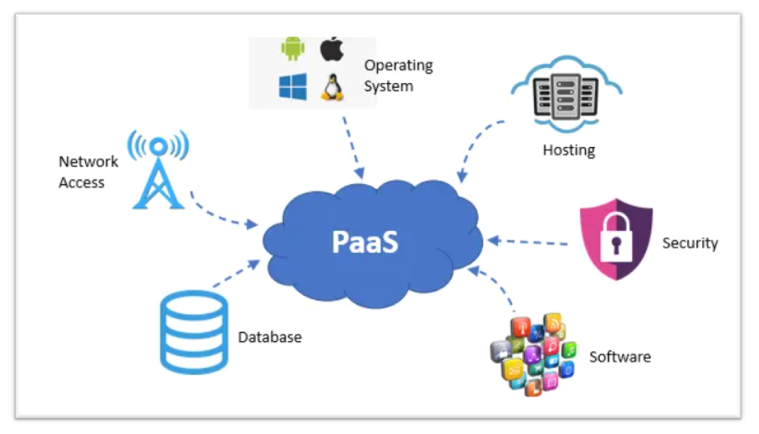
PaaS vs. IaaS vs. SaaS
Cloud computing has three major models offering different functionality and support. Understanding these models and their differences is important for cloud computer engineers. A brief difference between PaaS, IaaS, and SaaS is given below;
Infrastructure as a Service (IaaS): IaaS provides users with on-demand access to virtualized computing, storage, and networking resources via the Internet.
Platform as a Service (PaaS): Provides hardware and software tools online. Users handle applications and data, whereas providers oversee runtime, middleware, and the operating system.
Software as a Service (SaaS): Delivers software applications over the internet, on a subscription basis. Providers manage everything.
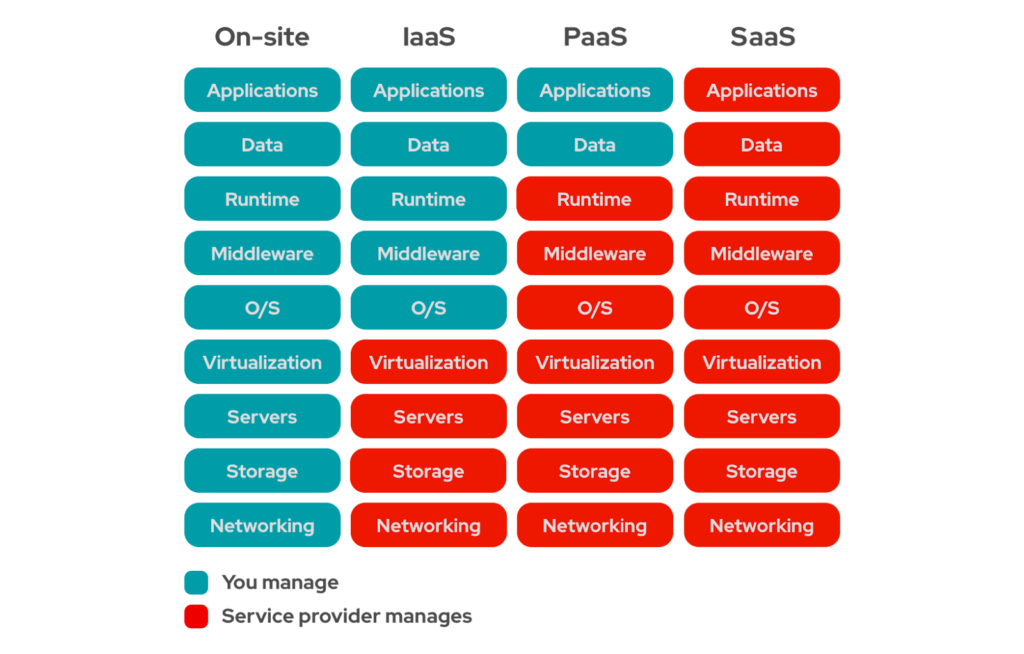
How PaaS Works
PaaS solution consists of three main components. These three components work together to provide the service.
- Cloud Infrastructure: Comprises virtual machines, storage solutions, and networking assets.
- Middleware Software: Delivers application development, deployment, and management services.
- User Interface (GUI): Provides a graphical interface for developers to engage with the platform.
PaaS provides all standard development tools through its online GUI interface. With enhanced workflows, several development and operational teams can work on the same project simultaneously. Middleware creates and develops applications directly within the PaaS.
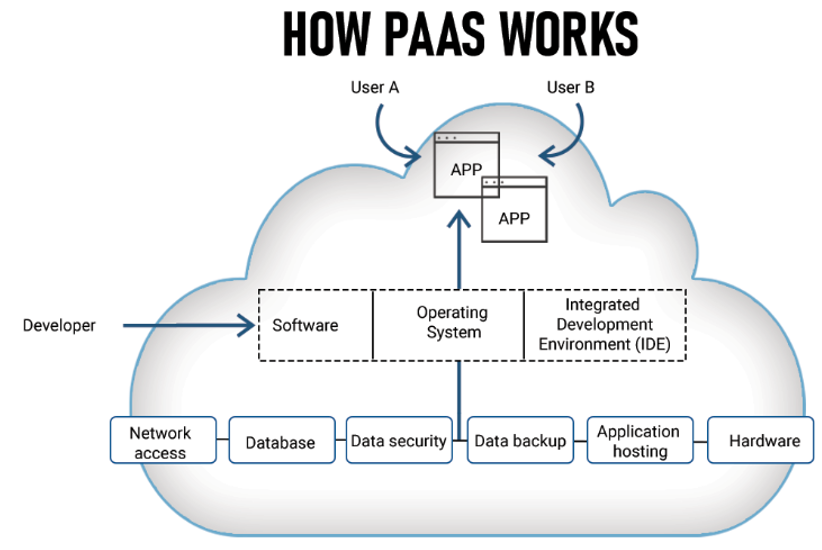
Benefits of PaaS
PaaS offers multiple benefits compared to an on-premises platform. Key benefits of PaaS are listed below;
- Accelerated Development: The use of pre-configured environments and tools shortens development time.
- Cost Efficiency: Removes the necessity for investments in hardware and software infrastructure.
- Scalability: Developers can easily scale applications up or down based on demand.
- Flexibility: Compatible with various programming languages and frameworks.
- Improved Collaboration: Facilitates teamwork among distributed development teams.
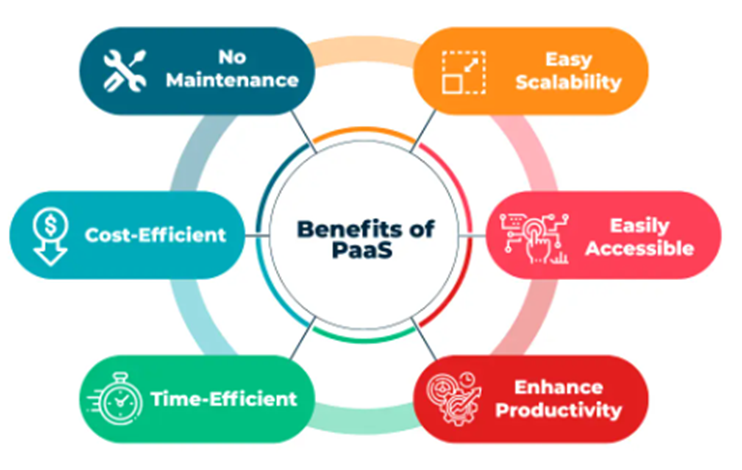
Types of PaaS
Platform as a Service (PaaS) is categorized into these three main types based on the deployment model and accessibility.
Public PaaS: A public (PaaS) is a cloud service in which the platform infrastructure (such as hardware, operating systems, middleware, databases, etc.) is managed and owned by a third-party cloud provider (e.g., Microsoft Azure App Service). Developers access these resources over the public internet to build, run, and manage their applications.
Private PaaS: A private PaaS refers to a cloud computing service where the platform infrastructure is set up within an organization’s internal network or private data center. The organization has total control over the hardware, software, and network.
Hybrid PaaS: A hybrid PaaS enables organizations to enjoy the benefits of both private and public PaaS models. This allows for deploying specific applications in a public cloud for scalability and cost-effectiveness, while ensuring that sensitive applications or data remain in a private environment for security and compliance reasons.
PaaS Use Cases
Organizations typically use Platform as a Service for these scenarios:
Internet of Things (IoT): PaaS can support a variety of programming languages, including Java, Python, and Swift, as well as tools and application environments, when developing IoT applications and processing data generated by IoT devices in real-time.
DevOps: PaaS can provide fully configured environments to automate the integration, delivery, security, testing, and deployment phases of software application lifecycles.
Analytics or business intelligence (BI): Organizations can utilize tools offered as a service via PaaS to analyze and mine their data, enabling them to make data-driven decisions.
PaaS – The Platform Driving Agile Innovation in the Cloud
Platform as a Service (PaaS) is redefining how developers build, deploy, and scale applications in today’s fast-paced digital world. Whether you’re a scaling startup optimizing your development pipeline or an enterprise accelerating digital transformation data Platform as a Service (PaaS) provides the necessary tools, flexibility, and speed for innovation, without the burden of infrastructure management.
Learn with WeCloudData: Upskill Your Team in Cloud & Data Technologies
Looking to empower your team with the latest in cloud computing, data engineering, and AI technologies? WeCloudData’s tailor’s its Corporate Training programs to meet the needs of forward-thinking companies. With hands-on, expert-led instruction, our courses bridge the skills gap and help your organization thrive in today’s data-driven economy.
Upskill with WeCloudData: Become a Cloud Engineer & Analytics Leader
Our Cloud Engineer Track delivers a comprehensive, hands-on approach to cloud engineering, equipping you with the skills to design, deploy, and manage secure, scalable, multi-cloud environments. The courses included in the cloud computing learning track include;
- Python Fundamentals
- Introduction to Linux
- Introduction to Docker
- AWS Fundamentals
- Azure Fundamentals
- GCP Fundamentals
Why This Program?
- End-to-End Cloud Mastery: From core principles to advanced architectures across AWS, Azure, and GCP.
- Enterprise-Grade Skills: Learn industry best practices for DevOps, resilience, and cost-optimized solutions.
- Real-World Readiness: Apply knowledge through hands-on projects and case studies mirroring modern IT challenges.
Who Should Enroll?
- Aspiring Cloud Engineers and Architects
- DevOps & SRE Professionals expanding their cloud expertise
- Tech professionals transitioning to multi-cloud environments
Visit WeCloudData to start your journey into Cloud Computing!
